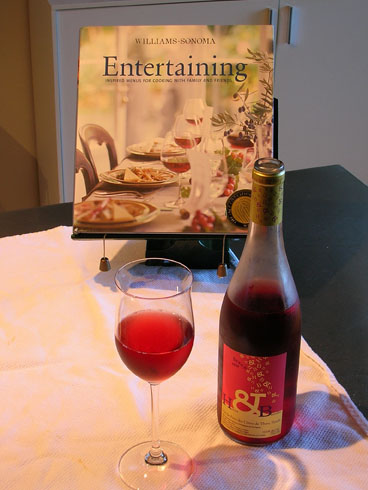Never was there a more screwed up, contorted, topsy-turvy mess in the wine world―at least in my opinion. It was called a white wine, but it really wasn’t. It came in a box (you could get it in bottles, too, but no one did) and that was just plain weird. The whole thing was a huge marketing success.
You know what I’m talking about—white zinfandel. Sutter Home came up with the idea to rebrand rosé as a white wine and put it in a box. It was inexpensive, a lot of it was sold, and it didn’t taste all that good. And rosé wine got a bad rap as a cheap, undesirable, and worst of all, an uncool wine to drink.
But what’s the real story about rosé?
Rosé wine has been around for a long time and like a lot of good wine, got its start in France. The Bordeaux region has been making great rosés for years, but other French regions produce it as well. California makes plenty of rosé, too. For years, it had a reputation in America as a not-very-serious wine, neither white nor red. 
So what exactly is a rosé?
Well, it is part white and part red wine, to be honest. Recall for a moment, the difference in how reds and whites are vinted. With a red wine, the juice stays in contact with the grape skins, imparting the red color to the wine. Whites don’t have contact with the skins and the result is the yellow hue. Red wines end up in oak barrels, either new oak or used or a combination of both. The taste profile is completely altered by the oak. Many whites go into oak as well, but a lot of whites are fermented in stainless steel tanks, too. Wine lovers have debated and will continue to debate how much oak is enough or whether whites should ever be oaked. That’s the fun of drinking wine—pretending you’re an expert by debating this stuff.A rosé is made by keeping the juice in contact with the skins but only for a short while. Rosés are practically never fermented in oak, but usually go into stainless or sometimes the French even use concrete tanks. So, you see, there are aspects of both red and white found in a rosé.
Here’s the great news. Rosé wine is tres hip these days. Today, rosés are back and back with a vengeance. And even if it wasn’t, you should still drink it because it tastes great! When, you ask, should I serve a rosé?
The very best time to drink a rosé is in the warm summer months. After that, winter, spring, and fall are good times as well. But it is in the summer when the ultra refreshing nature of a good rosé will thrill your guests and make you the hit of any barbeque party. There’s a hint of the heft of a red, but the cooling effect you get from the crispness of a white. In a word, scrumptious.
What do you pair with a rosé? Damn near anything. Anything off the grill, with maybe the exception of the heaviest meats, will work wonderfully with rosé. Juicy burgers? Perfect. Spare ribs? Love it. Last week I did a blackened salmon, paired it with rosé, and the guests are still raving about it. Serve it as a before dinner aperitif and your friends will call you a wine genius. Drink it outdoors at a summer concert with some cheese, bread, and olives.
No need to age or cellar a rosé; they are made to drink right away. The French rosés are affordable as are the California ones. Chill your rosé just as you would any white wine. If you have friends over, chill at least two bottles. And sit back and sip and rediscover the joys of rosé.






